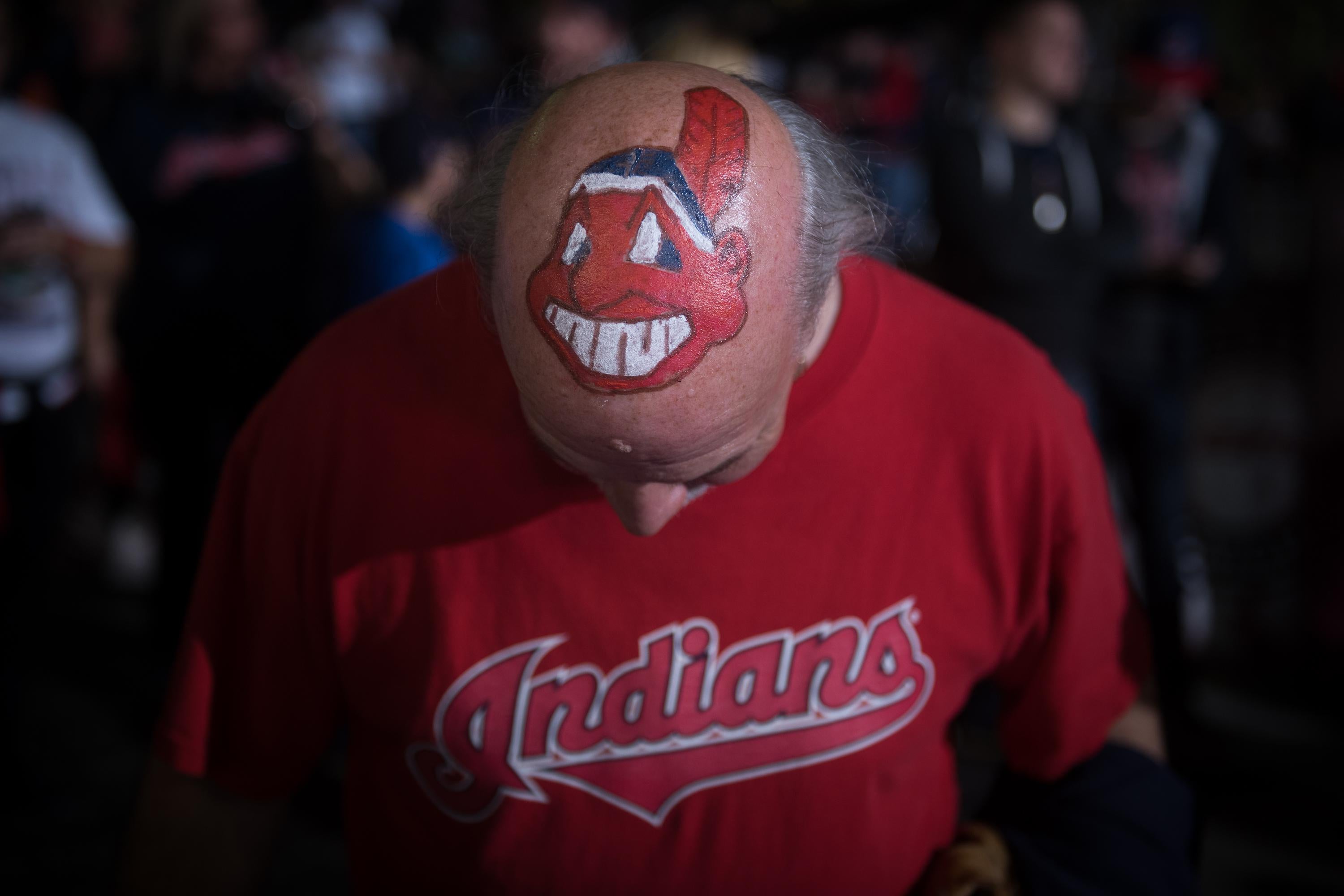On Monday night, the Cleveland Indians were swept away by the Houston Astros in the American League Division Series, bringing the team’s 2018 season to a close and with it an end to the franchise’s use of its pretty racist mascot, “Chief Wahoo.” The grinning caricature of a Native American wearing a single feather headdress has been in use, officially, for 71 years, although there are different claims made on when the inspiration for today’s scarlet red-faced depiction was first created. In January, the head-shaped logo was deemed inappropriate by Indians owner Paul Dolan and MLB Commissioner Rob Manfred, who announced the 2018 season would be the mascot’s last. At the time, Manfred deemed Wahoo “no longer appropriate for on-field use.”
Despite Manfred’s declaration, the Indians continued to use the logo throughout the 2018 season, featuring it less prominently. After years of slowly deemphasizing the divisive logo, for the 2018 season Cleveland turned to the “Block C” uniform style, but, according to the Washington Post, continued to use the Wahoo logo on jersey sleeves and occasionally on the team’s hats. The logo, for decades, has been the subject of protests from Native American communities; in 1998 protesters were arrested from burning an effigy of Wahoo outside the team’s stadium. Two decades later, Major League Baseball decided to act. That doesn’t mean Chief Wahoo will vanish altogether; merchandise carrying the logo will still be sold in the team’s gift shop and other local stores in in Northeast Ohio and Goodyear, Ariz. “The team will continue to sell Chief Wahoo gear because if it stops doing so, it will lose ownership of the trademark and others will be able to use the symbol as they please,” the Associated Press reported in January.
The move is a welcome one, but neither the league nor the franchise could be considered particularly ahead of the curve. Upon his induction to the Hall of Fame in 2018, Cleveland slugger Jim Thome requested his plaque in Cooperstown not include the logo. In a 2014 editorial, the team’s hometown newspaper, the Cleveland Plain Dealer, argued it was “time for a clean break” from the logo. “Americans have a long history of giving up on once-acceptable traditions when they come to realize the consequences—as unintended as they may be—of keeping them going,” the Plain Dealer argued. “One day, the Indians will say goodbye to Wahoo. It’s inevitable. And it’s a little unsettling that it hasn’t happened by now.”
That day turned out to be Oct. 8, 2018. In a fitting end for an offensive caricature, Chief Wahoo’s final out was recorded on Monday’s Indigenous Peoples’ Day, a growing holiday alternative to the negative history wrapped up in Columbus Day. Also fitting is that on that very same day, Washington’s NFL team suited up in the NFL’s marquee Monday Night Football game against the Saints, as if the world Cleveland was leaving behind hadn’t changed one bit, and was one worthy of holding onto at all.
